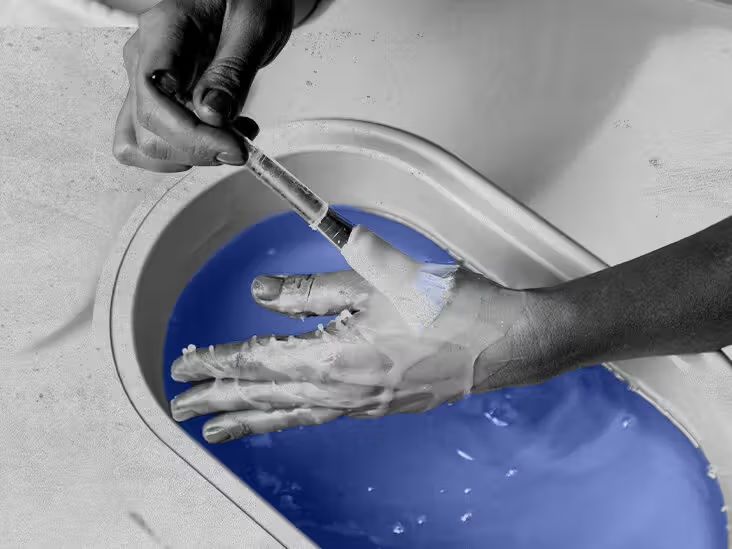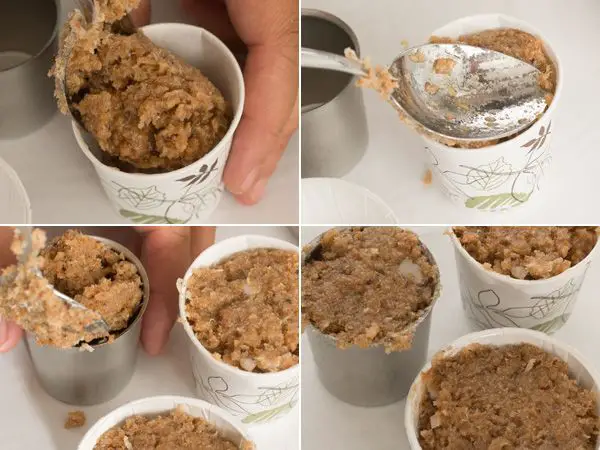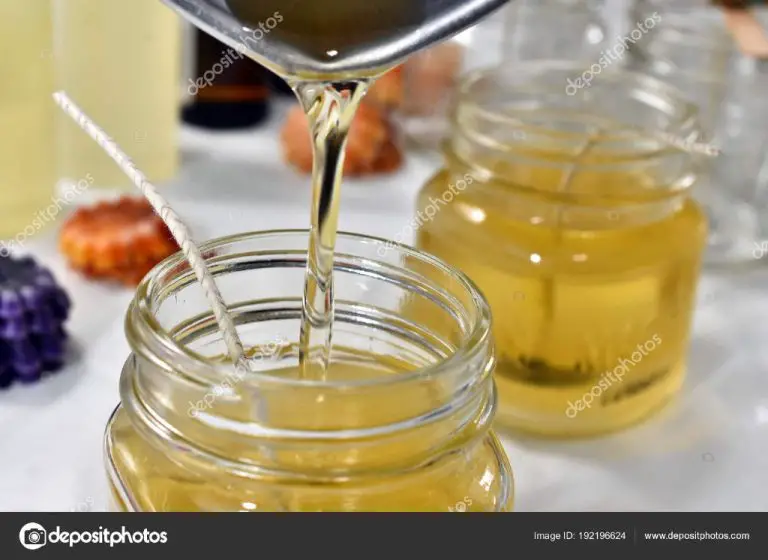How Do I Organize My Soap Making Supplies?

Proper organization is crucial for an efficient and successful soap making operation. Keeping your soap making supplies neatly organized saves time, reduces mistakes, and allows you to work more efficiently.
Without organization, you may waste time searching for ingredients and tools when you need them. Disorganization can also lead to errors, like using the wrong ingredients or improper measurements. A cluttered workspace can hinder your workflow and creativity.
On the other hand, an organized soap making area allows you to quickly find what you need when you need it. You can focus on creating rather than searching. Organization helps you plan your projects, inventory supplies, and clean up efficiently after each soap making session.
Investing some time into organizing your soap making space will pay off tremendously in the long run. Your projects will run more smoothly, and you’ll avoid many frustrations and mistakes. Most importantly, organization frees up your mind so you can focus on developing amazing soap recipes.
Label Everything Clearly
Keeping your supplies clearly labeled will help make your soap making process easier and more organized. Use a permanent marker to label all containers, jars, equipment, utensils, and anything else you use when making soap (1). The label should include the name of the item, such as “Lye” or “Olive Oil.” Make sure the writing is neat and large enough to read at a glance. It’s helpful to also include the date you purchased or made the item if applicable. Consider using a label maker for printed, uniform labels on containers (How to Label Soap for Sale in the USA: The Nitty Gritty …, 2022). Place labels on the lid and sides of plastic bins and containers. Having labels visible from multiple angles ensures you can identify contents quickly (2).
Do not rely solely on the original packaging – transfer ingredients like lye or fragrances into clearly marked storage containers so you can readily identify them. Standardize your labeling system so it’s consistent across all your supplies. With everything properly labeled, you’ll be able to grab exactly what you need and keep your soap making area organized.
Group Like Items
When organizing your soap making supplies, it is important to group like items together. This will make your workflow more efficient and ensure you can easily find what you need.
All of your fragrance oils should be kept together, as this is a key ingredient you will be reaching for frequently. Be sure to label each fragrance oil clearly. Store them somewhere easily accessible, like on a shelf above your workspace. Keeping them organized alphabetically can also help you locate a specific fragrance quickly (Source).
Your colorants and additives like mica, botanicals, clay, and extracts should be stored separately from your fragrance oils. Grouping these items together in boxes or bins makes sense since you likely won’t use them in every batch. Make sure to label them clearly as well.
Finally, keep all of your molding supplies and packaging materials together. This includes soap molds, silicone liners, loaf splitters, cutters, wrappers, boxes, labels, and anything else you use for finishing your soaps. Having a dedicated space for these items can help optimize your post-saponification workflow.
Invest in Storage Solutions
Having proper storage solutions for your soap making supplies will help keep your workspace organized and efficient. Here are some tips for investing in the right storage:
- Use racks, shelves and drawer organizers to maximize vertical storage space. Wire racks are great for storing batches of cured soap bars. Shelves with dividers keep ingredients, colorants, and fragrances sorted.
- Consider clear plastic bins and storage boxes so you can easily identify contents. Label the bins or use different colored bins to designate categories like oils, colorants, additives, etc. Clear boxes allow you to quickly see what you have in stock.
- Have designated spaces for each supply category. Give oils, butters, colorants, fragrances, molds, utensils, etc. their own area. This makes it faster to find what you need.
Investing in proper racks, shelves, bins and drawer organizers tailored to your supplies will give everything a home and keep your soap making space neat and functional. For inspiration, check out these soap room storage ideas.
Consider Workflow
When organizing your soap making supplies, it’s important to arrange items in the order you use them during the soap making process. This allows you to easily access what you need when you need it. Keep your most frequently used supplies like oils, lye, and fragrance oils within easy reach near your workstation.
Create zones in your workspace for each step of making soap – measuring, mixing, pouring, etc. Source Having your tools organized sequentially saves time and minimizes mistakes from forgetting ingredients or steps. Consider setting up systems like trays to move batches from one station to the next. Label stations clearly as well.
Streamline your process by storing soaping tools together and arranging oils/additives alphabetically or by use frequency. Keep safety gear like goggles and gloves handy. Make a habit of returning items to their designated spots after using to maintain organization.
Maintain An Inventory
Keeping track of your inventory is crucial for any small business, especially for soap makers. You need to know what supplies you have on hand and when it’s time to reorder items before you run out. An inventory system allows you to closely monitor your stock levels and usage.
Start by creating a list of all your soap making supplies, including additives like essential oils, colorants, and packaging materials. For each item, note the quantity you currently have in stock. Then track how much of each supply you use every time you make a batch of soap. Dedicate a notebook or use inventory management software like Craftybase to record this information.
When stock of an item drops below a certain threshold you’ve set, it’s time to reorder. Having an inventory allows you to anticipate demand and avoid scrambling when you suddenly run out of an important ingredient. You’ll know in advance when supplies are low so you can restock in a timely manner.
A well-maintained inventory system is indispensable for soap makers. It gives you control over your supplies, helps forecast production needs, and enables your business operate smoothly.
Clean As You Go
To keep your soap making space organized and prevent messes, it’s important to clean up as you work. Here are some tips for cleaning as you make soap:
Wipe up any spills, drips, or splashes immediately so they don’t have a chance to dry and become more difficult to clean. Keep paper towels or rags handy during your soap making session. Be sure to wipe down countertops, floors, and any other surfaces that come into contact with ingredients or soap batter. This will prevent sticky residue from building up over time.
Wash any tools, equipment, or containers immediately after using them. Don’t allow soap batter or residue to dry on utensils. Hot soapy water works well for washing most soap making supplies. Use a bottle brush to thoroughly clean squeeze bottles. Allow supplies to air dry before putting them away.
Take any expired products like lye, oils, additives etc. out of rotation so you don’t accidentally use them. Check expiration dates regularly and discard anything past its prime. Removing old materials from your soap making area helps minimize clutter.
Evaluate Storage Regularly
As you continue making soap, it’s important to periodically evaluate your storage setup to make sure it’s still working efficiently for your needs. Here are some tips for regularly reviewing your storage:
- Check that everything has a proper place – Make sure all your soap making tools and ingredients are stored tidily in their designated spots. If things are starting to get disorganized, it’s time for a refresh.
- Look for new organization opportunities – As your supplies evolve, find ways to better organize. For example, you may need more shelves or bins for new materials. Identify areas that need improvement.
- Remove unused items – Go through your storage and pull out any soap making ingredients or tools that you no longer use. Decluttering will make your space more efficient.
Regularly evaluating your storage setup will ensure it continues meeting your soap making needs as your business grows. An organized space leads to better workflow.
Invest in Proper Storage
Proper storage containers are essential for keeping soapmaking ingredients in ideal condition. When selecting containers, opt for food-grade plastic, glass, or stainless steel sources. Avoid reactive metals that could impart unwanted properties. Match lidded containers to ingredients to control air exposure. Oils prone to rancidity should go in airtight containers, while dried herbs and fragrances need some ventilation.
Give special consideration to storing volatile essential oils and fragrances. Keep these tightly sealed and away from light and heat to prevent evaporation. Store in small containers to limit air exposure. Glass amber bottles work well. When melting ingredients like cocoa butter, shea butter, or beeswax, pour melted product into clean containers and allow to fully harden before sealing. Keep melted products in a climate-controlled space to prevent shifting consistency.
Maintaining steady, moderate temperature and humidity helps keep ingredients stable. Avoid storing near heat, air vents, windows, or in the garage or attic where conditions fluctuate. With proper storage vessels and conditions, soapmaking supplies stay fresh and ready for use.
Conclusion
In summary, there are several key tips to keep in mind when organizing your soap making supplies. First, clearly label all ingredients, tools, and storage containers. Group like items together in designated areas. Invest in storage solutions like shelves, bins, and organizers to maximize your space. Consider your workflow when setting up your space and maintain an accurate inventory. As you work, clean up as you go and regularly evaluate your storage system, making changes as needed. Properly storing your soaps while they cure is also important.
Staying organized as a soap maker allows you to work efficiently, keep your space clean, easily find what you need, and ensure your products stay high quality. It takes some initial time and effort to set up an effective system, but the benefits are well worth it. With your soaps and ingredients neatly organized and at your fingertips, you can focus on doing what you love – handcrafting beautiful, nourishing soaps.




